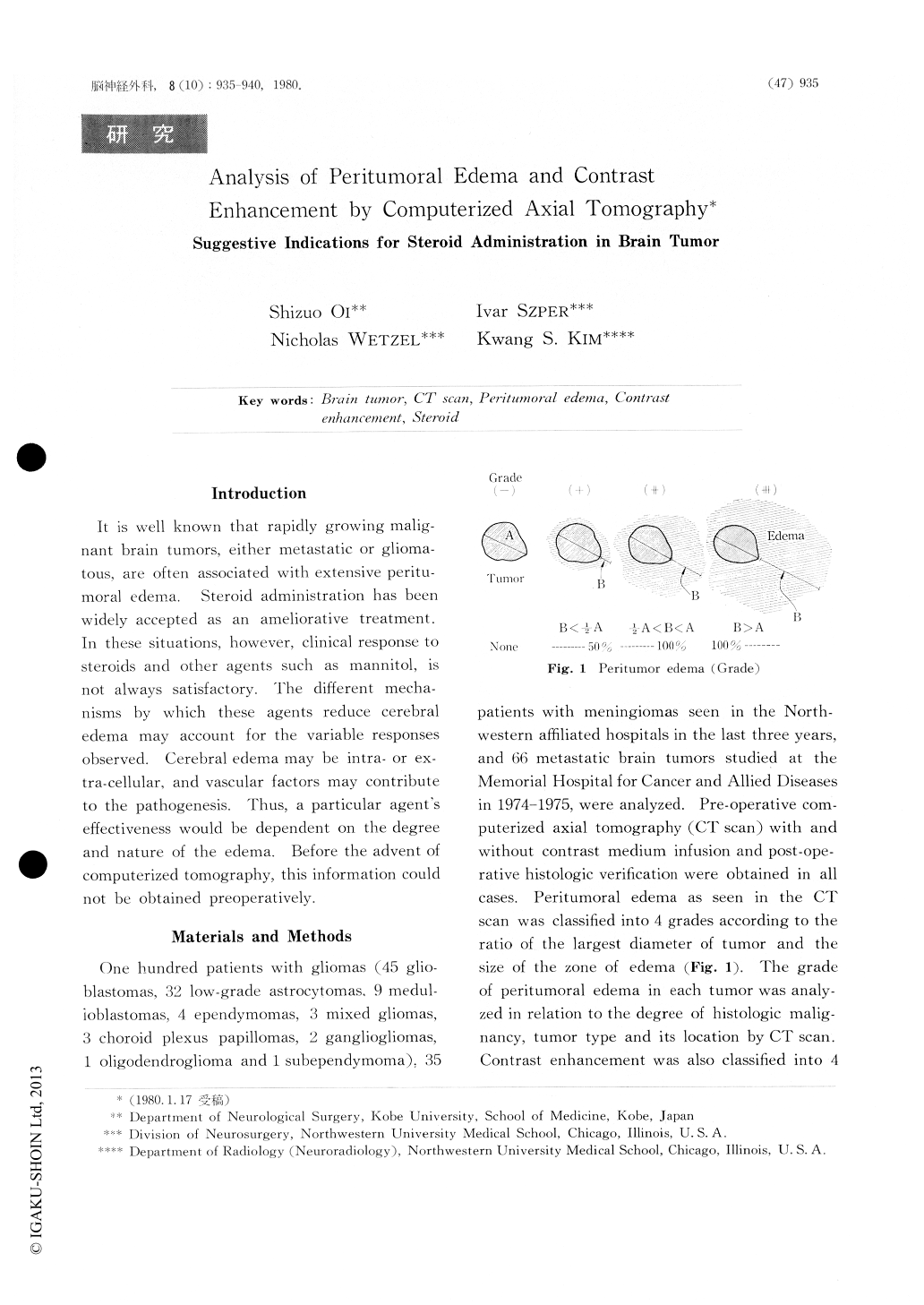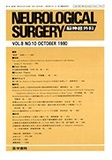Japanese
English
- 有料閲覧
- Abstract 文献概要
- 1ページ目 Look Inside
和文抄録
CT scanは,脳腫瘍の診断とそのfollow upに不可欠の補助診断法であると同時に,脳腫瘍に付随するperitumoral edemaに関する情報を得るうえで重要な検査法である.このPeritumol edemaに対するGalicichらのdexamethasoneを用いた画期的か非観血的治療法の研究発表(1961年)以来,ステロイド療法は脳腫瘍の治療の一環をなしてきた.しかし,このステロイドの臨床的効果は常に満足できるものではなく,ときに重篤な合併症により患者を死に至らしめることもある.類似した神経学的所見を呈する脳腫瘍の症例で,ステロイドの効果は一方では劇的であり,一方では全く反応を示さない現象を如何に解釈すべきか.われわれはこの観点より,ステロイド投与の適応につき腫瘍のGT scan所見を分析し,peritmnoral edemaのpathogenesis,および想像されるステロイドの作用機序の検討を試みた.
合計201例の脳腫瘍(グリオーマ,メニンジオーマ,転移陸脳腫瘍)につき,そのperitumoral edemaとcontrast enhancementの程度およびその相関性を分析した.転移性脳腫瘍の59%,グリオーマの46%,メニンジオーマの34%に有意義なperitumoral edemaしが認められた.
Introduction
It is well known that rapidly growing malignant brain tumors, either metastatic or gliomatous, are often associated with extensive peritumoral edema. Steroid administration has been widely accepted as an ameliorative treatment. In these situations, however, clinical response to steroids and other agents such as mannitol, is not always satisfactory. The different mechanisms by which these agents reduce cerebral edema may account for the variable responses observed. Cerebral edema may be intra or extra-cellular, and vascular factors may contribute to the pathogenesis.

Copyright © 1980, Igaku-Shoin Ltd. All rights reserved.


